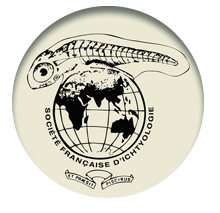Feeding close to fishing lights may be dangerous for the larvae of the smallest freshwater fish of Europe
How to cite: Tsounis, L., Vasilopoulou, G., & Kehayias, G. (2022). Feeding close to fishing lights may be dangerous for the larvae of the smallest freshwater fish of Europe. Cybium, 46(1): 33-40. https://doi.org/10.26028/CYBIUM/2022-461-005
Economidichthys trichonis is the smallest teleostean of Europe and is inhabited Lake Trichonis (Greece). Previous investigation concerning the feeding of the dominant fish of this lake (Atherina boyeri) revealed that the use of fishing lights in the purse seine fishery of this species may result to its increased predation upon the larvae of E. trichonis, which come close to light. This study investigates the diet of these larvae, to understand why they approach to the light although they suffer heavy predation by A. boyeri. Collection of the larvae was made using light traps, where the light was produced by Cyalume light sticks of different colours (white, red, yellow, blue and green). The traps were deployed in the lake during moonless nights in May, June, July, September and October 2020. In total, 833 larvae were caught with greater numbers in the traps with the green, the yellow and the white colour. Gut content analysis revealed a diet comprised of 10 taxa, among which the copepod Eudiaptomus drieschi dominated accounting for an average frequency of occurrence (F) of 98.6%. The cladoceran Diaphanosoma orghidani and the mollusk larvae of Dreissena blanci followed (F = 42.5% and 32.5%, respectively). E. trichonis larvae approach to light following the accumulation of zooplankton and face intense interspecific competition with A. boyeri since they have almost the same food preferences. The predation exerted by A. boyeri on its competitor reduces this interspecific competition, while providing it energy from this high nutritional prey. This study confirms that fishing lights favour the predatory instinct of different fish species and affect drastically the survival and growth of E. trichonis, an endangered species. Considering that fishing with light is exercised worldwide, the actual consequences of this practice on fish larvae survival is challenging to be evaluated in other marine and freshwater ecosystems.


